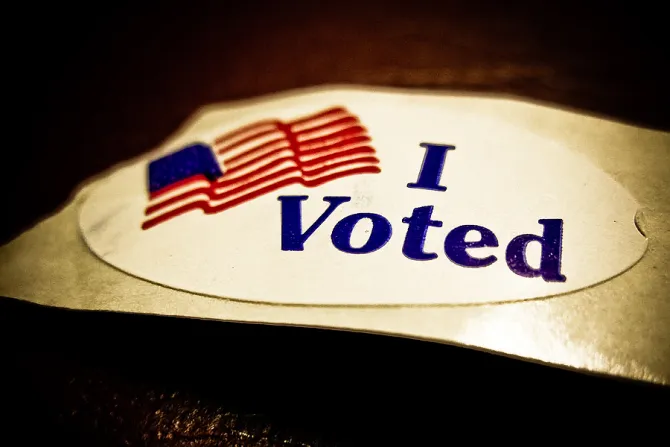Washington D.C., Nov 6, 2016 / 14:02 pm
A new poll released Friday shows Donald Trump winning the Catholic vote by 16 points – but is it an accurate prediction of how Catholics will vote next Tuesday?
"We just don't have enough data to say anything very reliable this year," cautioned Dr. Mark Gray of the Center for Applied Research in the Apostolate, which conducts social science research on the Catholic Church, at Georgetown University.
"The Exit Polls will provide better insight but we won't see these until after the fact," he told CNA.
Of all the general election polls, only a few of them have reported the religious affiliations of respondents. And for those that have, their revelations of the Catholic vote vary widely.
The latest survey of likely voters by Investor's Business Daily and TechnoMetrica Market Intelligence shows Catholics supporting Trump by a 16-point margin – 54 to 38 percent, with three percent supporting the Libertarian Party candidate Gary Johnson. Four percent are "not sure" who they will support.
While an Oct. 21 IBD/TIPP survey had Trump winning Catholic voters 49 to 36 percent, with five percent voting for Johnson, Trump's lead narrowed to just 46 to 41 percent on Oct. 28, with Johnson's support increasing to eight percent.
However, after the FBI announced Oct. 28 that it was again investigating Hillary Clinton's use of a private email server from her time as Secretary of State, Trump's margin of support among Catholics increased again to 16 percent by Friday, Nov. 4.
Other polls – conducted before the FBI's Oct. 28 announcement – show markedly different results in the Catholic vote.
A Pew Research poll, released Oct. 27, showed Clinton narrowly winning the Catholic vote among registered voters, 46 to 44 percent.
The Public Religion Research Institute, meanwhile, showed Trump winning among White Catholics 48 to 41 in a compilation of surveys from Sept. 22 to Oct. 17, but Clinton winning Latino Catholics by a vast margin, 84 percent to 12 percent.
What is to be made of these poll numbers?
"There is so much volatility in the polls in what appears to be a close race," Dr. Gray noted, and in what is expected to be a close race, that "volatility" will be magnified.
"We also have fewer polls this year than in previous elections," he added, and "on top of that the Catholic sample is typically 18 percent to 25 percent of survey respondents so the problems with margin of error are even bigger. You get more volatility with a smaller sample."
Thus, it is hard to accurately predict how the general public will vote, much less a sub-group like Catholic voters, he said.
Joshua Mercer, co-founder of CatholicVote.org, agreed that the Catholic vote is hard to predict with certainty right now.
There has been "a lot more fluidity" in the public's support for the candidates this year than in 2012, he noted. "Overall, there's a lot less polling," he added, which means that "there's a lot less information to go around."
(Story continues below)
Ultimately, the election result may come down to several key swing states like Florida, North Carolina, Colorado, and Ohio, he said, and those states have sizeable Catholic populations. "They are all states where Catholic voters are going to decide the next president," he insisted.
Catholics are expected to vote as the rest of the populace votes, as this has been the case in recent elections.
Catholics have voted along with the popular vote in the last few presidential elections, choosing Al Gore in 2000 when Gore won the popular vote but lost the electoral vote, as well as voting for George W. Bush in 2004 and Barack Obama in 2008 and 2012, always mirroring the rest of the electorate.
In the mid-term elections, Catholics went for the victorious party, voting for Democrats in 2006 when the party took control of Congress, and then voting for the victorious Republicans in 2010 and 2014.



